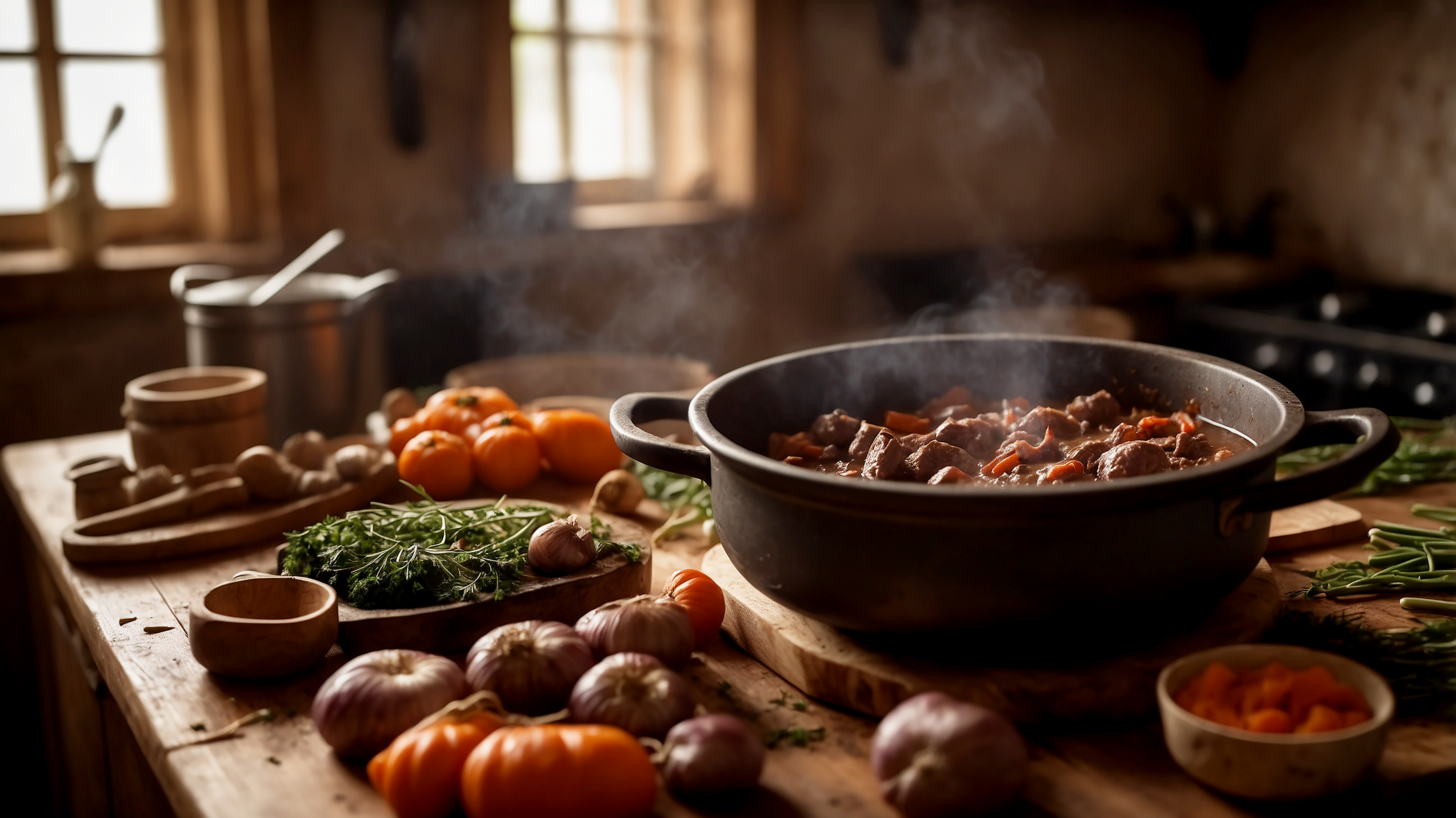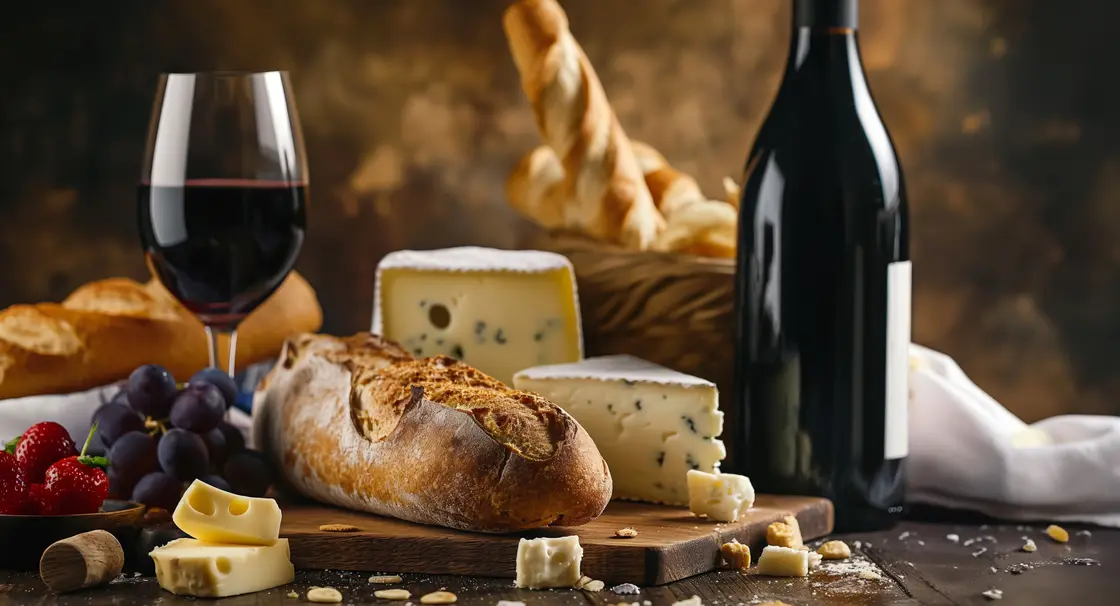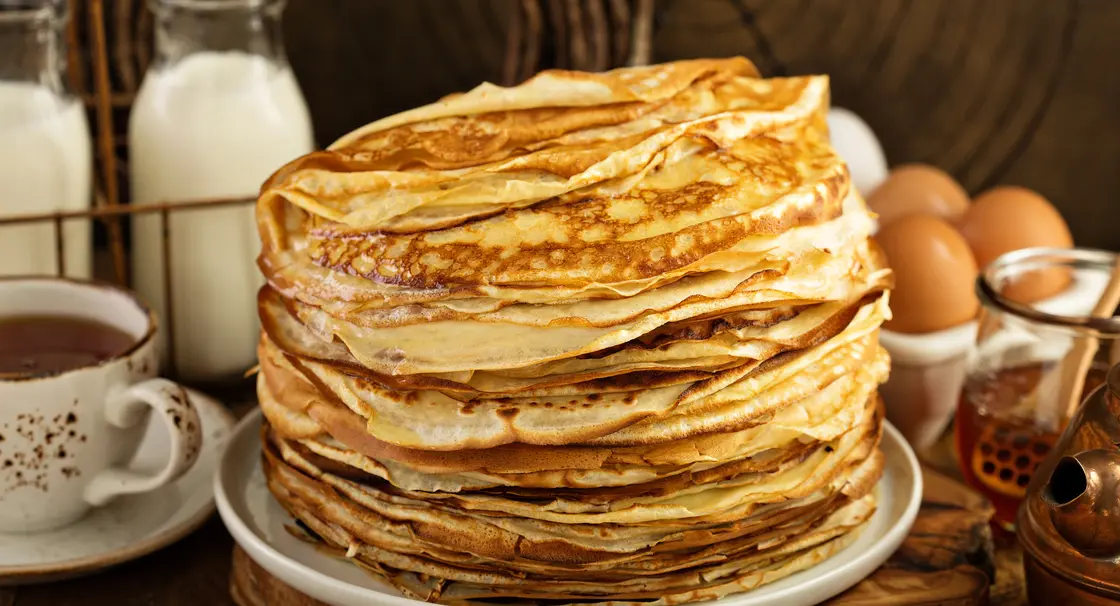If the train’s about to leave...
You have just enough time to take on board five key facts that will make you the star of any conversation about the French art of eating well.
Are you sitting comfortably? Then let’s begin...
- The French gastronomic meal is recognised by UNESCO
- There are more than 210 varieties of wine grape in France
- France is home to 1,200 types of cheese
- French culinary culture can be divided into three major historical periods
- The fork was first used in the 16th century.
To find out more about the history of French cuisine and the specialities you simply must try, keep reading this article. We’re about to dive into the art of fine dining – hold on tight!
If the train has already left but you’d like to know more...
The history of the French meal
The history of French gastronomy can be divided into three periods: the medieval period (Middle Ages), the Renaissance and the modern era (19th century). French culinary tradition began with the Gauls . They’re the people we have to thank for braised game, pies and fish cooked on the fire or steamed.
Later, in the Middle Ages, the French gathered together for lavish feasts to celebrate marriages, victories, alliances and births. These grand buffets were opportunities to showcase one’s social status, with guests feasting on stews, braised vegetables and game – all eaten with their bare hands. The fork did not arrive until much later, during the reign of Henry III in the 16th century.
Buffet-style dining continued for many years and it wasn’t until the Renaissance that the foundations of modern cuisine began to take shape. The introduction of the famous fork and other utensils brought order to the dining tables of the day, as did, later, during the reign of Louis XIV, the formal meal etiquette we know today: soup, starter, roast meats and, to finish, dessert. The transition from game to roasts accompanied by sauces was influenced by Catherine de Medici, who, as it happens, was also the one who popularised the use of the fork for eating back in the day.
Fast forward to the 19th century and the age of modern cuisine, which saw the emergence of the first great chefs like Auguste Escoffier and, later, Paul Bocuse, Michel Guérard and Joël Robuchon. The Michelin Guide, too, made its début in 1900, quickly finding an audience and becoming the authority on French gastronomy. Moreover, the world’s first restaurant was in France, opening in Paris in the 18th century.

![[image]cité internationale de la gastronomie et du vin dans la ville de Dijon](/sites/default/files/2024-12/%5Bimage%5Dcit%C3%A9%20%20internationale%20de%20la%20gastronomie%20et%20du%20vin%20dans%20la%20ville%20de%20Dijon.jpeg)
The French gastronomic meal recognised by UNESCO
In 2010, the French gastronomic meal was recognised by UNESCO as Intangible Cultural Heritage. If you read the previous paragraph, you’ll understand exactly why: culturally, France has been a land of exceptional gastronomy since the Middle Ages.
French culinary specialities
You’ll likely be familiar with many of these, but here are the specialities you’ll find on the table in traditional French bistros:
- Bœuf bourguignon,
- Pot-au-feu,
- Crêpes,
- Blanquette,
- Quiche lorraine,
- Bouillabaisse,
- Aligot,
- Gratin Dauphinois,
- Macarons…
And the best bit? Each speciality often hails from a specific region of France, so you could go to Marseille for a freshly made bouillabaisse, to Dijon for an excellent bourguignon, or to Paris for an incredible steak tartare. You just need to hop on the right train!
Wine
Having showcased French food, we couldn’t possibly forget wine, which has been a staple on French tables since the Middle Ages. France is home to more than 210 wine grape varieties, some ancient and indigenous, and ten or so classic varieties that feature in practically every cellar:
- Sauvignon blanc,
- Pinot noir,
- Carignan,
- Cabernet franc,
- Cabernet sauvignon,
- Chardonnay,
- Syrah,
- Grenache,
- Merlot.
All that’s left for you to do is determine whether French gastronomic culture is still as exquisite as it was in the Middle Ages. Hop aboard one of our TGV trains !

